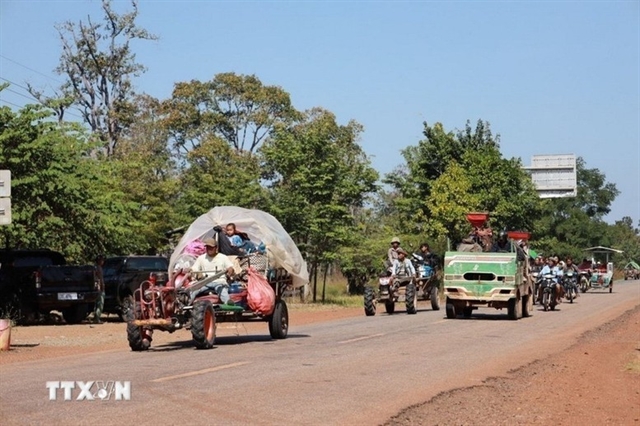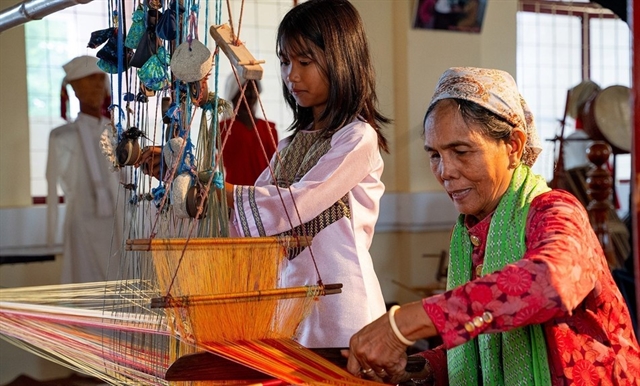 Features
Features

As coastal erosion continues to affect thousands of lives in Viet Nam's southernmost province, authorities are taking steps to adapt to climate change before the damage reaches irreversible levels.
As coastal erosion continues to affect thousands of lives in Việt Nam's southernmost province, authorities are taking steps to adapt to climate change before the damage reaches irreversible levels.
By Văn Châu
“I can't buy freshwater because there's not enough available, and even when I have money, it's too expensive. When I return dirty from work, I just jump into my shrimp breeding pond, which contains seawater,” says Trần Văn Út, a farmer in the southernmost province of Cà Mau.
A few years ago, seawater was located about 100 to 200 metres from Út's house in the coastal commune of Đất Mũi in Ngọc Hiển District.
"But now, the seawater is just 10 to 15 metres away and has already entered my underground well," he says.
Út is one of thousands of residents in the area whose farms have been affected by coastal erosion and saline intrusion due to the effects of climate change.

|
| Due to the impact of climate change, riverbank and coastal erosion in Cà Mau Province has increased in recent years. VNS Photo Văn Châu |
In many rural areas in Cà Mau, rainfall and underground water are the primary sources of freshwater, but as many as 20,000 households in the province lack access to freshwater.
Of that figure, about 13,500 households have no connection to the national water supply system or lack access to underground water, according to the provincial People’s Committee.
Because of climate change, riverbank and coastal erosion has worsened in recent years, according to the province's Committee for Natural Disaster Prevention and Search and Rescue.
Since 2005, the Mekong Delta has seen yearly erosion of about 300 hectares, according to reports. Between 2010 and 2015, the region sank between five and 10 centimetres over most of its area.
Without extreme measures to alleviate subsidence, the Mekong Delta could cease to exist in 100 years, warn experts.
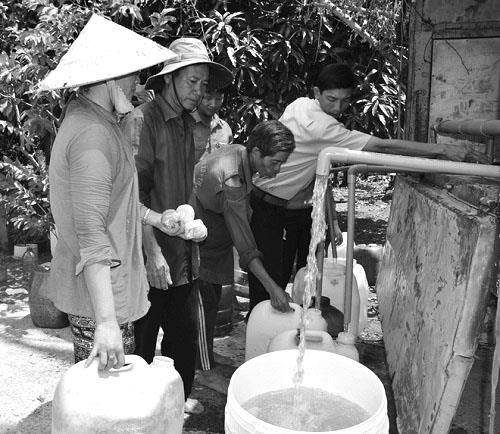
|
| As many as 20,000 households in the Mekong Delta province of Cà Mau lack water because of climate change. VNS Photo Văn Châu |
Cà Mau Province is listed as one of the most vulnerable localities in the delta to climate change.
According to a climate change scenario, if the sea level rises by 25cm, about 85.4 per cent (or 4,700sq.m) of the total natural area of the province will be inundated, and about 200,000 households will be displaced by 2040.
Last year, 118 cases of riverbank and coastal erosion as well as nine tidal waves caused serious damage to property and people's livelihoods, says Trần Trung Nghĩa of the People's Committee.
In vulnerable areas, thousands of households continue to face danger from landslides, which have been more frequent since 2006.
The risk of landslides is high at 27 sites of riverbank erosion with a total length of 38 kilometres.
In eastern coastal areas, more than 1,000 households need to be relocated to protect their lives and property.
To resolve the problem, the province has petitioned the Government for funds for coastal erosion-prevention projects and for additional capital to upgrade dykes in the western and eastern coastal areas.
Both coasts have been seriously affected by climate change, with erosion of 30m-50m every year on the eastern coast as existing dykes have not offered sufficient protection.
The erosion rate of riverbanks in Cà Mau has been usually 0.3-0.5m per year since 2017, according to the report of the province's People's Committee.
Erosion has also damaged housing and transport infrastructure. In response, the province is focusing on the most urgent projects and landslide prevention at riverbanks and beaches.
So far, the province has invested VNĐ700 billion (US$30.2 million) in projects to adapt to erosion, saline intrusion and drought.
One such embankment project to protect the eastern coast in districts Rạch Góc and Vàm Xoáy is being urgently deployed, with total investment of more than VNĐ135 billion ($5.9 million) and completion expected by the end of the year.
Authorities have also created a protective mudflat in and partly around embankments in the eastern Năm Căn and Ngọc Hiển districts.

|
| Cà Mau Province’s western and eastern coastal areas are seriously affected by climate change. VNS Photo Văn Châu |
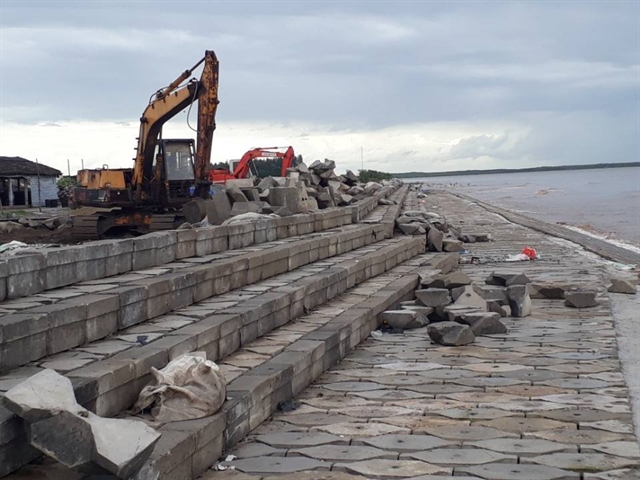
|
| Authorities have also created a protective mudflat in and partly around embankments in the eastern Năm Căn and Ngọc Hiển districts. VNS Photo Văn Châu |

|
| Authorities have also created a protective mudflat in and partly around embankments in the eastern Năm Căn and Ngọc Hiển districts. VNS Photo Văn Châu |
In addition, hundreds of hectares of mangrove forest have been restored, and many dykes have been built or upgraded.
However, both the western coastal areas in U Minh, Trần Văn Thời and Phú Tân districts and eastern coastal areas in Đầm Dơi, Năm Căn and Ngọc Hiển districts face more than 100km of eroded areas that threaten the foundation of dykes and increase the risk of dam breaches.
The province is also evacuating households that are at risk of being affected by climate change.
From now through 2020, for example, new housing will be built in 21 residential areas for 5,000 people who will be relocated, with approved funds of about VNĐ481billion ($20.75 million), according to the People’s Committee.
Over the past 10 years, the province has lost more than 8,800ha of coastal forests, with an annual average loss of 800ha.
Besides the embankment projects on the eastern coast of Rạch Góc and Vàm Xoáy areas, the province is planting protective forests near river mouths and coastal forests.
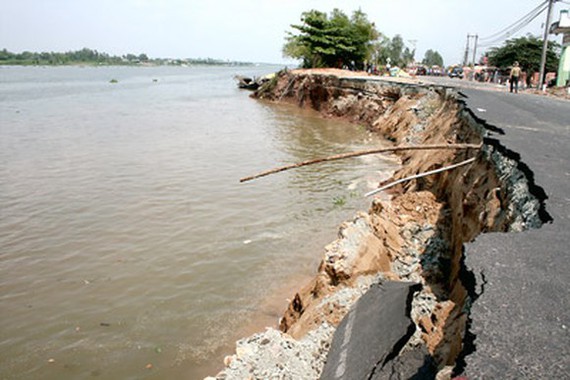
|
| Erosion is worsening in coastal areas near Rạch Gốc seaport in Cà Mau Province’s Ngọc Hiển District. VNS Photo Văn Châu |
In the past decade, Cà Mau has lost 300-400ha of protective forests per year because of human causes, according to the province’s Department of Agriculture and Rural Development’s Division for Natural Disaster Prevention.
The Cà Mau Forest Rangers Department has launched campaigns to educate residents about the value of protective forests and has increased forest patrols. It has also begun to penalise people who flout forest protection laws.
In July, a mangrove afforestation campaign in several provinces in the Mekong Delta, including Cà Mau, was launched by the Central Steering Committee for Natural Disaster Prevention and Control, the German Agency for International Cooperation (GIZ), and the Cà Mau People’s Committee.
Deputy Minister of Agriculture and Rural Development Nguyễn Hoàng Hiệp said at the launch ceremony that the programme was "an opportunity for officials and residents in coastal provinces to understand the benefits brought by mangrove forests".
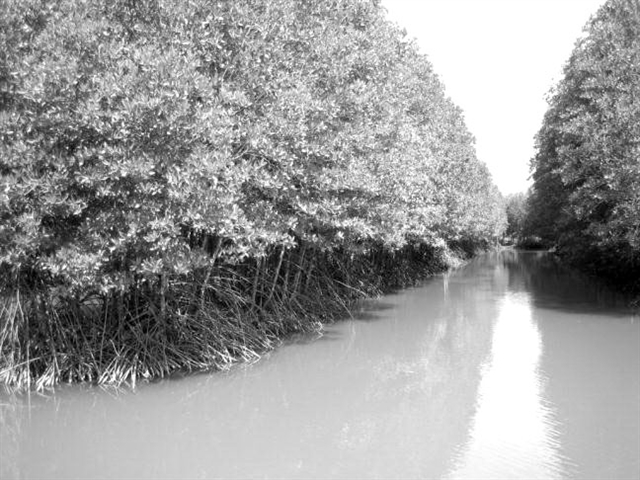
|
| Cà Mau Province is planting protective forests near river mouths and coastal areas. VNS Photo Văn Châu |
New farming models
Besides investments in technical infrastructure and afforestation, Cà Mau authorities have also called on farmers to restructure agriculture by establishing specialised farming areas for key agricultural products, and by growing other crops in ineffective rice fields or rotating rice with other crops in the same field.
Under the shrimp-rice farming model, for example, farmers breed shrimp in the dry season and grow rice in the rainy season in the same field.
The model, which protects the environment because fewer chemicals are used, produces a rice yield of 4-5 tonnes per hectare a crop and 300-370kg of shrimp per hectare a crop, offering farmers profits 2-4 times higher than rice farming alone, according to the province’s Department of Agriculture and Rural Development.
As the country’s largest shrimp producer, Cà Mau plans to expand the sustainable farming models. A super-intensive shrimp model, for example, that breeds up to 250 shrimp per square metre, five times higher than the traditional number, offers a yield of 40-50 tonnes per ha per crop and a success rate of more than 85 per cent, according to Nguyễn Văn Trung of the department.
Many households and companies have adopted the super-intensive model that use advanced technologies, including biofloc technology and biogas ponds, to treat waste.
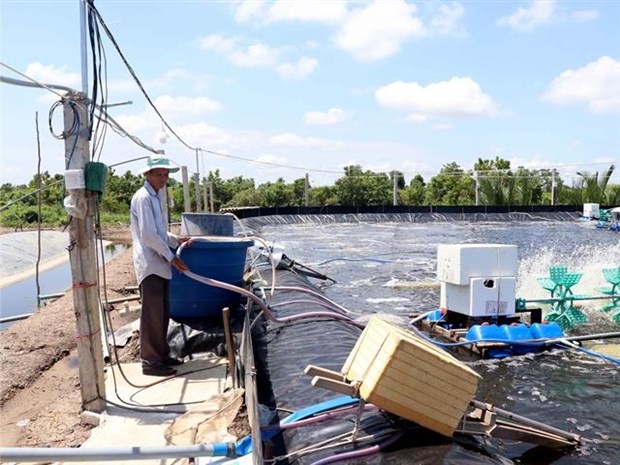
|
| Farmer Trần Văn Bính breeds shrimp under a super-intensive farming model in Cà Mau Province’s Năm Căn District. VNS Photo Văn Châu |
All of these new farming models have brought total profits of VNĐ60-70 million (US$2,590 – $3,000) per hectare a year to farmers. Natural food like algae and weeds are used to feed shrimp, which helps to prevent pollution.
In addition, breeding giant river prawns and growing rice in the same field during the rainy season in Thới Bình District have improved farmers’ incomes. Nguyễn Hoàng Lâm, head of the district’s Agriculture and Rural Development Division, says the district has the potential to breed black-tiger shrimp in the dry season.
Besides expanding new farming models, the province is improving management of the shrimp farm environment to ensure disease prevention and the quality of the breeding stock.
Farmers will also be taught advanced techniques to meet VietGAP, global GAP and Aquaculture Stewardship Council standards.
In addition, the province has been developing new environmental protection policies and rolling out incentives to attract investment in sustainable shrimp farming models as well as infrastructure such as electricity and irrigation networks. – VNS



